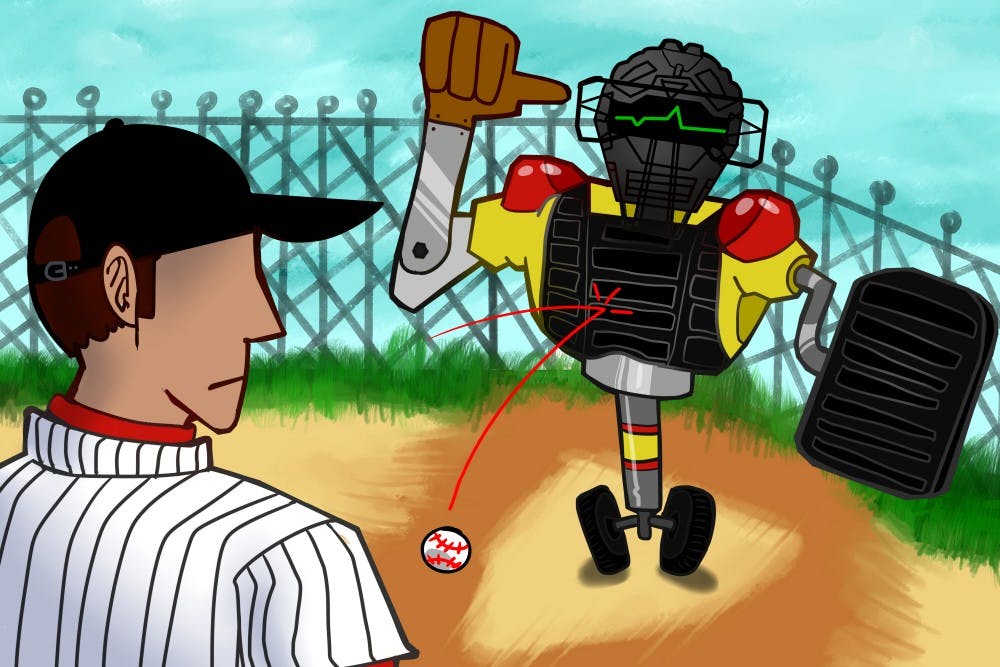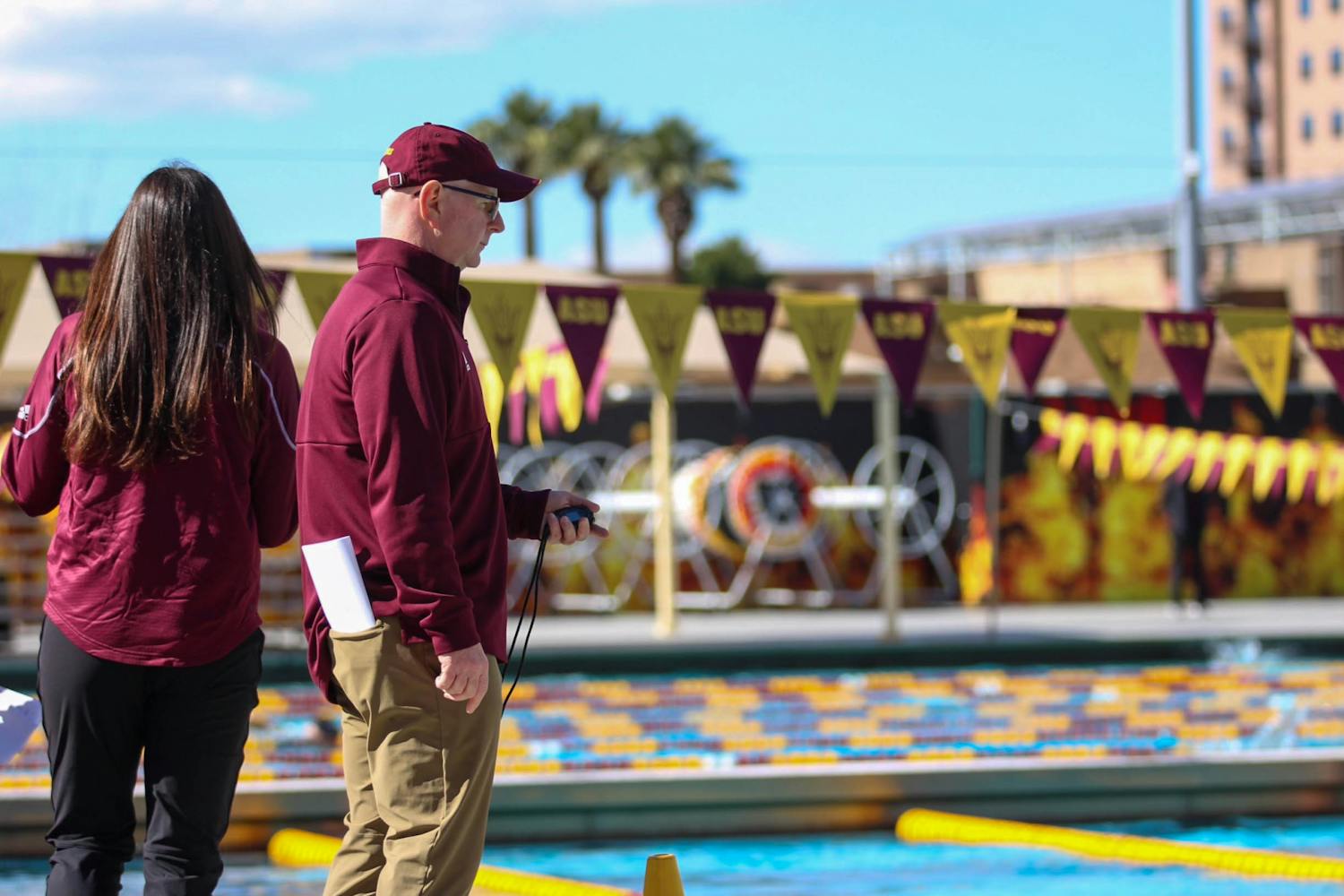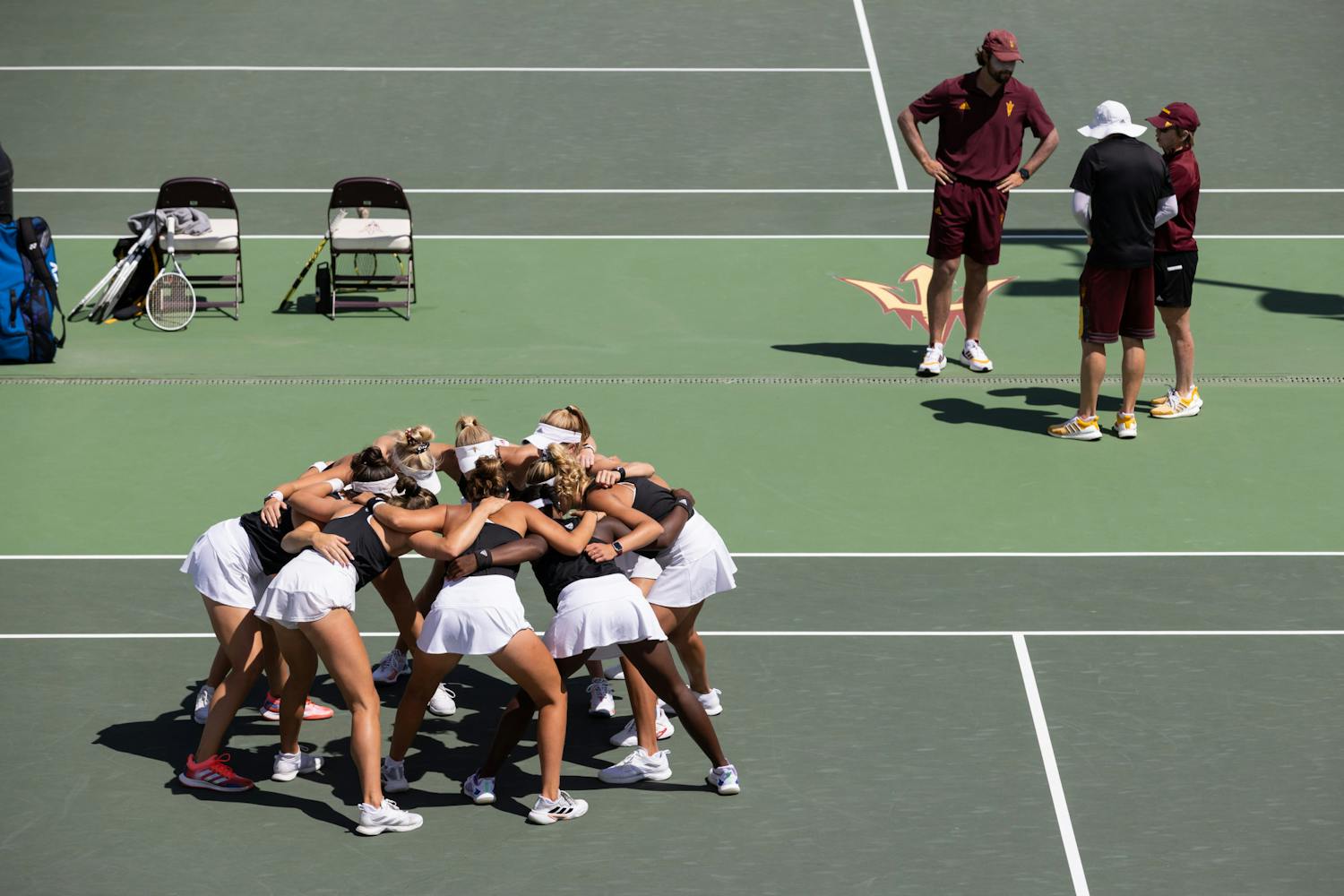There’s nothing more innovative than changing one of the key aspects of baseball, a game that has been around since the mid- to late-19th century, for the better.
As the No. 1 most innovative school in the U.S., ASU could be at the forefront of a major shift that could begin to incorporate more technology into baseball to help eliminate unintentional missed calls from home plate umpires.
With the increase in technology over recent decades, fans who are watching games on television can see a computerized strike zone on the screen and gauge calls based on what the technology shows them.
People who work in broadcast booths and offices away from the field of play see the same things and can relay information to managers and players on the field if need be.
The only people who don't seem to have access to the information are the umpires making the calls. That’s where technology can lend a helping hand toward getting the calls right, which is what everyone ultimately wants.
This shift wouldn’t be intended to completely eliminate home-plate umpiring jobs or take humans out of the field. Rather, they would be given access to the information millions of viewers already have.
Mike Rooney, a college baseball analyst for ESPN and an assistant coach for ASU baseball from 1998 to 2004, said adding robot umpires could effective, but people need to keep baseball's traditions in mind and research as much as possible before making the change.
“I don’t think the idea is bad in and of itself,” Rooney said. “I would be very cautious that we get ahead of ourselves. There’s still the romantic or traditional side of baseball.”
While a shift to computerized umpiring could potentially revolutionize the game, it could also create a divide between people pushing for the technology and purists who are against changing the fundamental aspects that have made baseball a fan favorite for over a century.
“We’d be changing the strike zone radically,” Rooney said. “As soon as we stop having humans call balls and strikes, can we ever go back to that? Every day I (don’t umpire), my skills are diminishing. That would give me concern. How do we maintain highly skilled umpires?”
That would create an interesting dilemma if the technology fails for whatever reason and human umpires are forced to take over again after an extended period of not practicing or sharpening their skills. Umpiring isn’t the same as riding a bike.
Despite potential risks and concerns, adding the technology could go a long way.
MLB umpires get ball and strike calls wrong 15 percent of the time, according to data collected by Daren Willman at baseballsavant.com. The best of the best are right 85 percent of the time, but robots can make the right call every time.
The technology is primitive, but it has already been tested briefly in an independent league game in 2016. As expected, reviews were mixed, but it served as a reminder that the technology is available and could become prevalent within the sport sooner than some people think.
Independent league baseball is the perfect place to fine-tune the technology and make it a viable option for college-level, minor and major league baseball because players aren't playing as their job.
College and professional players rely on good umpiring to earn money through scholarships and salaries, so preparing the technology at a lower level and having it work its way up to the bigger leagues could be the best solution to eventually getting it into the big leagues.
If a school such as ASU did decide to push the technology, it could usher in much faster change and integration within the sport. It could only take one notable organization or team embracing the technology to catch the attention of baseball’s higher-ups and show them how positively impactful the technology has the potential to be.
Regardless of the hypothetical timeline, MLB commissioner Rob Manfred has indicated his awareness of the technology, even if he isn't entirely in favor of it and doesn't anticipate it becoming an integral part of baseball in the near future.
“With technology, you’re either all-in or all-out,” Rooney said. “Personally, we all need to do a lot of research. The devil’s in the details. I’ll be curious to see it.”
Time will tell whether robot umpires make an impact on baseball in the coming years, but an innovative school like ASU could be just the entity to spark change within the sport’s landscape and headline the shift to the future of umpiring.
Reach the columnist at Steven.Slobodzian@asu.edu or follow @PSlobodzianASU on Twitter.
Like The State Press on Facebook and follow @statepress on Twitter.
Editor’s note: The opinions presented in this column are the author’s and do not imply any endorsement from The State Press or its editors.
Want to join the conversation? Send an email to opiniondesk.statepress@gmail.com. Keep letters under 500 words and be sure to include your university affiliation. Anonymity will not be granted.




